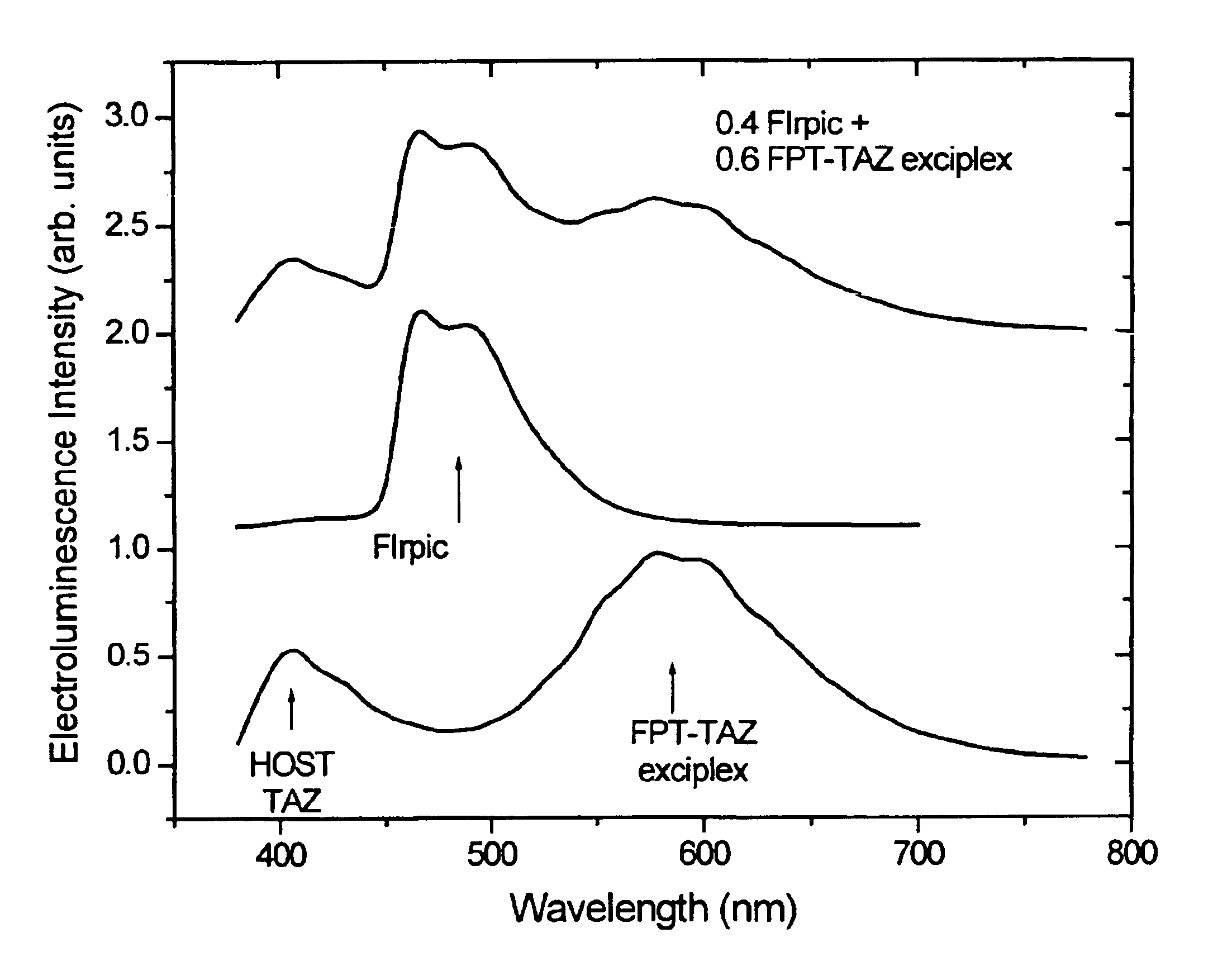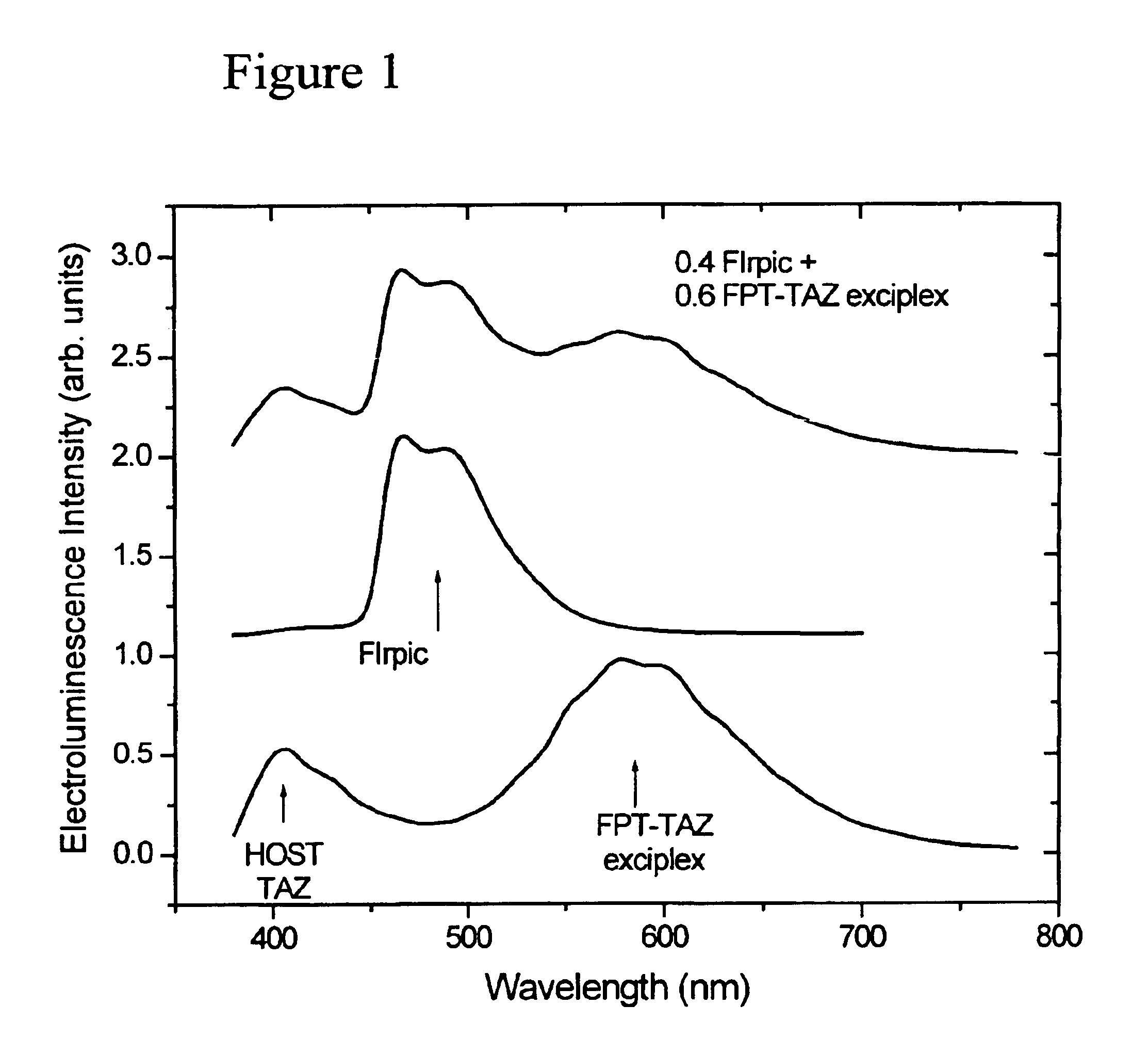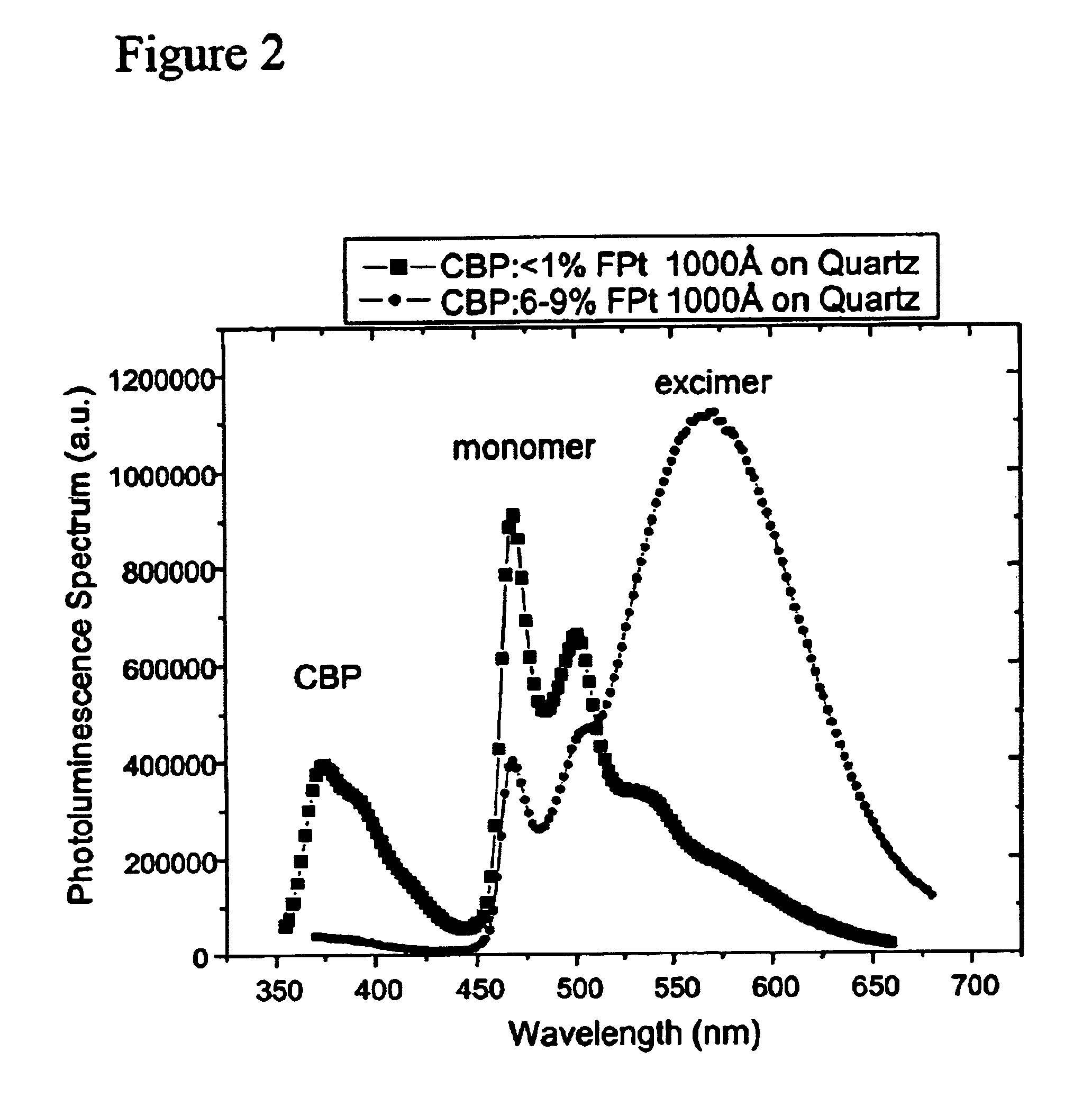White light emitting OLEDs from combined monomer and aggregate emission
a white light and aggregate emission technology, applied in the direction of discharge tube luminescnet screens, natural mineral layered products, etc., can solve the problems of inability to convert excitons into higher energy singlet excited states, energy loss, decay process, etc., and achieve high color rendering index, simple and bright
- Summary
- Abstract
- Description
- Claims
- Application Information
AI Technical Summary
Benefits of technology
Problems solved by technology
Method used
Image
Examples
example 1
[0084]The electrophosphorescent excimer WOLEDs were grown on a glass substrate precoated with an indium-tin-oxide (ITO) layer having a sheet resistance of 20-W / sq. Prior to organic layer deposition, the substrates were degreased in ultrasonic solvent baths and then treated with an oxygen plasma for 8 min. at 20 W and 150 mTorr. Poly(ethylene-dioxythiophene):poly(styrene sulphonic acid) (PEDOT:PSS), used to decrease OLED leakage current and to increase fabrication yield, was spun onto the ITO at 4000 rpm for 40s, and then baked in vacuum for 15 min at 120° C., attaining an approximate thickness of 40 nm. The hole transporting and host materials, as well as the two dopants were prepared by standard procedures (See Lamansky, S. et al., Inorg. Chem. 40, 1704-1711, 2001) and purified by thermal gradient vacuum sublimation. The molecular organic layers were sequentially deposited without breaking vacuum by thermal evaporation at a base pressure of −7 Torr.
[0085]Deposition began with a 30 ...
example 2
[0096]OLEDs were prepared with FPt3 at doping levels of 8, 10 and 12%. The device structure consisted of ITO / NPD (400 Å) / Ir(ppz)3 (200 Å) / CBP-FPt3 (300 Å) / BCP (150 Å) / Alq3 (200 Å) / Mg—Ag. The current voltage characteristics of the three devices were similar, with progressively less leakage current at low voltage as the doping level is increased. The CBP host emission was not observed at any of the doping levels, indicating that the FPt3 dopant is efficiently trapping all of the excitons formed in the CBP matrix. While exciton formation in the CBP is a possible result of hole-electron recombination, it is also possible that the hole or electron could be trapped at the FPt3 molecule and direct recombination at the dopant occurs. The latter process will lead to excitons being formed on the dopant, without requiring energy transfer from the matrix material, i.e. CBP in this case. The Ir(ppz)3 electron blocking layer was necessary to prevent electron leakage into the NPD layer, which lead...
PUM
| Property | Measurement | Unit |
|---|---|---|
| Color | aaaaa | aaaaa |
| Polymeric | aaaaa | aaaaa |
| Phosphorescence quantum yield | aaaaa | aaaaa |
Abstract
Description
Claims
Application Information
 Login to View More
Login to View More - R&D
- Intellectual Property
- Life Sciences
- Materials
- Tech Scout
- Unparalleled Data Quality
- Higher Quality Content
- 60% Fewer Hallucinations
Browse by: Latest US Patents, China's latest patents, Technical Efficacy Thesaurus, Application Domain, Technology Topic, Popular Technical Reports.
© 2025 PatSnap. All rights reserved.Legal|Privacy policy|Modern Slavery Act Transparency Statement|Sitemap|About US| Contact US: help@patsnap.com



